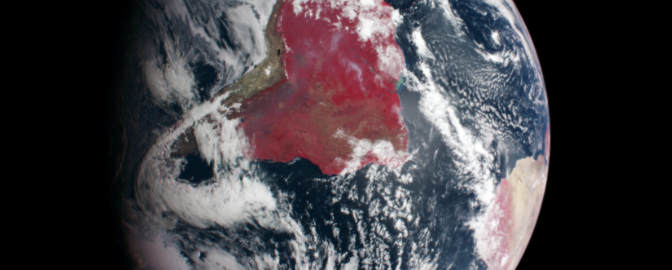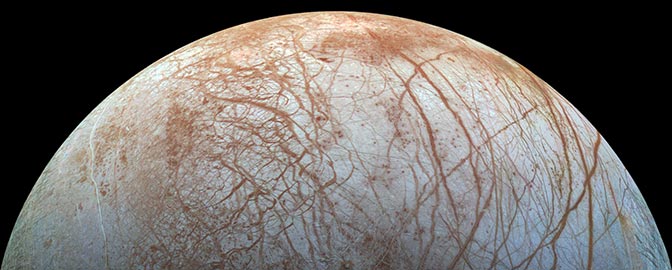New NASA budget would shut down 41 space missions

Written by
Asa Stahl, PhD
Science Editor, The Planetary Society
June 3, 2025
NASA stands at the brink. On May 30, 2025, the White House Office of Management and Budget announced a plan to cancel no fewer than 41 space missions — including spacecraft already paid for, launched, and making discoveries — as part of a devastating 47% cut to the agency’s science program. If enacted, this plan would decimate NASA. It would fire a third of the agency’s staff, waste billions of taxpayer dollars, and turn off spacecraft that have been journeying through the Solar System for decades. Humanity would no longer explore the Universe as it does today, and our ability to confront deep, cosmic questions would be set back an entire generation.
There is still time to save NASA science from this extinction-level event. We are encouraging Congress to reject the White House’s plan and organizing ways you can show elected officials that space science and exploration matter. Efforts like this have worked before to help keep space missions alive.
The first step is knowing what’s at stake. This is a guide to some of the many missions slated for cancellation, and the mysteries that would go unsolved if we turned our backs on them.
All cancellations presented here have been directly sourced from the budget proposal and its reporting.
Mars Sample Return
The mission: Bring back the first samples from another planet, look for signs of life, and prepare for future crewed exploration of Mars.

Status: Phase 2 in development; Phase 1 launched and active
Launch dates: 2020, 2030, 2031 (proposed)
The NASA/ESA Mars Sample Return mission aims to bring pieces of Mars back to Earth, where we could see if they host signs of life. These samples would transform our understanding of Mars. They would a shine light on whether the red planet has ever been inhabited, the details of its history, and what hazards it might pose to future astronauts. Their clues would help reveal how Mars, a world that once flowed with liquid water, has since dried up into a barren desert.
This would be perhaps the most ambitious robotic space mission of all time. NASA and its international partners would have to land on Mars, load the samples onto a spacecraft, and then perform the first-ever rocket launch from the surface of another planet to get the samples back to Earth. If successful, this would mark a leap in capabilities that would revolutionize space exploration for decades to come.
Most of the samples have already been collected by NASA’s Perseverance rover. But while Perseverance can run experiments and make major discoveries on its own, it is limited by the tools it can carry. To have the best chance of solving the most longstanding Martian mysteries, we have to leverage the full force of humanity’s largest, most powerful tools — and that means bringing samples back to labs on Earth.
Experts have called for Mars Sample Return as a top scientific priority for over twenty years. The United States and European partners have invested billions in the program already, and generations of scientists have dedicated themselves to making it a reality. Abandoning samples we have already collected on the surface of Mars would be a historic mistake.
The Nancy Grace Roman Space Telescope
The mission: Discover what planets are like throughout the galaxy, search for black holes, and help reveal the nature of dark energy.

Status: Construction almost complete
Launch date: October 2026 – May 2027
The Nancy Grace Roman Space Telescope is NASA’s next flagship orbital observatory — a mission on the same scale as the Hubble Space Telescope, with a similarly huge impact. Roman is projected to discover as many as 200,000 possible planets beyond the Solar System, survey over 1 billion galaxies, and hunt for tiny black holes that could help explain dark matter.
Roman has the power to reshape what we know about planets throughout the galaxy. The mission promises to take direct photographs of thousands of planets close to the Solar System, as well as find potentially Earth-like worlds around other stars. The telescope would likely discover hundreds of new moons around Jupiter and Saturn.
At the same time, Roman’s black hole and galaxy surveys could help uncover the true nature of dark matter and dark energy. These two mysteries might hint at undiscovered laws of physics, new kinds of particles, and different predictions for the ultimate fate of the Universe.
Roman would also provide a massive upgrade from Hubble’s already stunning views of the Universe. Its images would be just as sharp as Hubble’s, but capture 100 times more of the sky in a single shot.
Unlike other missions described here, the newly proposed budget does not cancel Roman. Instead, it slates the mission for a massive 50% cut, which could put the spacecraft at risk of major delays and perhaps, eventually, cancellation. Yet almost 90% of Roman’s projected costs have already been spent. The mission is on time, on budget, and nearly ready to launch. Cutting its budget now would only undermine an investment that’s about to pay off.
DAVINCI
The mission: Descend to the surface of Venus and probe its atmosphere along the way, testing whether the planet ever had oceans or could have hosted life.

Status: In development
Launch date: ~2030
Full name: Deep Atmosphere Venus Investigation of Noble gases, Chemistry, and Imaging
DAVINCI was set to be the first probe to enter the clouds of Venus in nearly 50 years. Without it, we may never know whether Venus once had an ocean or could have hosted life.
This mission is designed to descend toward the surface of Venus and take measurements of the planet’s atmosphere along the way. DAVINCI would search for clues about Venus’ past, decipher its potential to host water, and test whether microbial life could possibly survive within the atmosphere today.
Answering these questions would change how we think about planets throughout the galaxy. Since Venus may represent what many other small, rocky planets end up like, DAVINCI’s findings might give us a hint about how common Earth-like life might be throughout the Universe.
Scientists originally proposed DAVINCI to NASA through the agency’s highly competitive Discovery Program, where its scientific merit stood out among many other submissions. Now, NASA is in the early stages of developing the mission. Cancelling it would mean turning away from exploring even one of our closest neighbors in the Solar System.
VERITAS
The mission: Map the surface of Venus and study its interior, unveiling how the planet has changed over time.

Status: In development
Launch date: ~2031
Full name: Venus Emissivity, Radio Science, InSAR, Topography, and Spectroscopy
VERITAS aims to discover how Venus ended up boiling under clouds of acid instead of teeming with life like Earth. The mission is a crucial counterpart to DAVINCI. While both spacecraft will help get to the bottom of whether Venus was once a mild, water-rich world, only VERITAS is dedicated to uncovering how the planet transformed over time.
From its orbit above Venus, VERITAS would peer through clouds to study the planet’s surface and interior. The spacecraft would take the first high-definition 3D map of Venus ever, then look for signs of activity like glowing pools of lava and erupting volcanoes.
This will help scientists decide whether a catastrophic event — like a worldwide volcanic eruption — might have completely reshaped Venus in the past, or whether the planet instead changed more gradually over time. By uncovering how a world that was born so similar to Earth ended up so different, VERITAS would also help us refine what kinds of places we target in the search for life.
Like DAVINCI, NASA selected VERITAS through a highly competitive process. The agency is now in the early stages of developing the mission. If VERITAS is cancelled, we would lose a powerful window onto our neighboring planet and the cataclysms of its past.
New Horizons
The mission: Explore Pluto and other outermost worlds of the Solar System up close for the first time.

Status: Active
Launch date: January 19, 2006
New Horizons is the first spacecraft ever to fly by Pluto and study it up close. The mission revealed Pluto as it had never been seen before, unveiling the dwarf planet as surprisingly varied and active. Now, New Horizons is exploring the outermost reaches of the Solar System as one of the most distant spacecraft ever built.
When New Horizons flew by Pluto in 2015, it discovered jagged mountains and deep, glacier-carved valleys, sweeping dunes, signs of ice volcanoes, and evidence of a possible underground ocean of liquid water. These findings revolutionized our sense of far away, icy worlds, bringing them into focus as dynamic places that could potentially host life.
After Pluto, New Horizons explored the dwarf planet’s moon, Charon, and discovered it may also host an underground ocean. The mission then flew past a world called Arrokoth — now the farthest object in the Solar System ever visited — and found that it is actually made up of two primordial worlds stuck together. This snowman-like shape surprised scientists and challenged our ideas about how planets form.
Turning off New Horizons now would end a mission that is actively exploring the frontiers of our Solar System. If given the chance, the spacecraft could stay operational until sometime in the 2030s. There could be time for New Horizons to explore another world like Arrokoth, breaking its own record for the farthest world humanity has ever visited.
OSIRIS-APEX
The mission: Catch up with the asteroid Apophis just after it nearly misses Earth.

Status: Active
Launch date: September 8, 2016
Full name: Origins, Spectral Interpretation, Resource Identification, and Security – APophis EXplorer
OSIRIS-APEX is on its way to explore a giant asteroid that, in 2029, will nearly hit Earth. The mission aims to take modern humanity’s closest call with a major asteroid and turn it into an opportunity: a chance to better understand asteroids, learn more about how the Solar System formed, and help prevent future impacts.
On April 13, 2029, the asteroid Apophis — which is about as tall as the Empire State Building and three times as wide and long — will pass closer to Earth than the orbits of some satellites. If this asteroid hit Earth, the energy of the collision would be roughly equivalent to 1,000 of the most powerful nuclear bombs in the United States’ arsenal.
But Apophis won’t hit Earth. Instead, OSIRIS-APEX will watch from a distance as Apophis flies by, then catch up to study the asteroid in more detail. The spacecraft will map Apophis, track its trajectory, and eventually fire thrusters to stir up its surface. The information that OSIRIS-APEX gathers will help scientists understand the forces that shape asteroid orbits, improving our ability to predict what might hit us in the future — and maybe, one day, even redirect an asteroid on a collision course with Earth.
OSIRIS-APEX is as close to a “freebie” as space missions get. It’s the bonus phase of a previous NASA mission, called OSIRIS-REx, which completed its goals with fuel to spare.
The spacecraft is already on a course to Apophis. Shutting OSIRIS-APEX down now would not only be needlessly wasteful, it would squander a rare opportunity: an encounter this close with an asteroid like Apophis only happens near Earth once every 7,500 years.
Juno
The mission: Orbit Jupiter, probe its atmosphere and deep interior, and learn how the planet formed.

Status: Active
Launch date: August 5, 2011
Juno is the first mission to probe deep within Jupiter and the farthest spacecraft currently in orbit around another planet. For almost a decade, Juno has taken detailed observations of Jupiter’s strange internal structure, its stormy weather, and its powerful magnetic fields.
The mission’s most famous discovery may be the fact that Jupiter’s core is “fuzzy”, with heavy elements spread far around instead of condensed into a solid ball. This could mean that Jupiter was hit by another would-be planet as it was forming billions of years ago, or it could be a sign that giant planets like Jupiter evolve differently than we thought. The longer Juno studies Jupiter, the more it can help solve this mystery.
In 2018, NASA extended Juno’s mission to explore Jupiter’s rings and four largest moons: Io, Europa, Ganymede, and Callisto. The spacecraft has spotted volcanic eruptions on Io, imaged shifting ice flows on Europa, and found organic compounds on Ganymede that likely bubbled up from an ocean beneath the moon’s surface.
Though Juno was only designed to do science for one year, it has now been making new discoveries for almost a decade. If it isn’t cancelled, the mission could continue exploring the Jupiter system for years to come.
The list goes on…
The seven NASA missions described above are just the tip of the iceberg. If the new budget passes, dozens of others would be cancelled.
NASA’s Astrophysics division may be hit the hardest. Its 66% budget cut would shut down eight spacecraft dedicated to studying the most explosive events and extreme environments in the entire Universe, including several of the most powerful space telescopes of all time. These missions are watching supernovae go off, discovering black holes, and searching for dark matter. Just one Astrophysics observatory — Chandra, a sibling of the Hubble Space Telescope — has led to over 10,000 scientific papers. It shows no signs of slowing down soon.

The new budget would also cancel 10 projects studying the Sun and the space surrounding Earth. Some of these spacecraft help reveal how solar storms affect our planet, giving us a chance to lessen the damage that solar outbursts could do to electronics. Others investigate the Sun’s dangerous radiation so we can better protect astronauts and satellites, like GPS, in the future.
Nearly a dozen missions face cancellation within NASA’s Earth Science division. These spacecraft are designed to track the major forces shaping our planet, from rainfall and wildfires to hurricanes and urbanization. People all over the world use this information to help keep crops alive and stave off natural disasters. NASA’s Landsat program, which has given us an uninterrupted record of our entire planet since 1972, would be among those shut down..
If this new budget passes, though, the greatest loss won’t be of any one mission. It will be the discoveries humanity does not even know it is losing, the wonders not yet imagined, and the epiphanies that could be waiting, right now, among distant worlds.
That may be hard to picture. But exploration is a choice society makes — and it is one we can abandon.
Breakthrough research starts with YOU!
Your support will empower the next round of STEP grant winners. Make your gift today to fund tomorrow's promising science and technology projects.
Donate

 Explore Worlds
Explore Worlds Find Life
Find Life Defend Earth
Defend Earth

